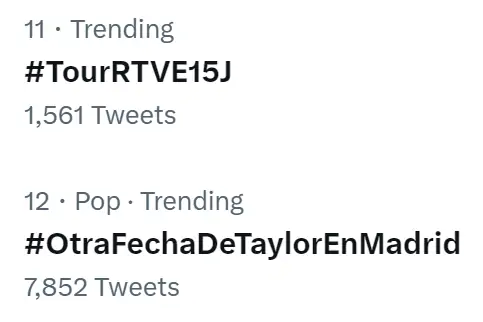Let me tell you that there is a great confusion regarding what we can call social media or not.
There are people who argue that YouTube is part of this category because you can share content and leave comments.
By:
Created:
Updated:

However, you can also send an email or a video with a story to the newspaper El Mundo.
It also allows comments, yet it is not considered a social network.
So, what is the difference then?
In this article, I will explain, based on my experience, why social media is not so different from media outlets.
Moreover, I will also tell you how to leverage these channels for the benefit of any type of organization.
Looking for a social media agency in Spain?
Send an email:
hola@apablo.com
Table of Contents
What’s social media?
Social media websites are digital platforms on the internet where any individual or entity can publish content.
These same users can also view the content posted by others.
Since anyone or organization can make a post, these networks receive enormous amounts of text, images, and videos every day.
But I told you that this is not so different from a traditional media outlet, right?

Difference from a newspaper 📰
A newspaper also receives numerous content every day via email, WhatsApp, and many other channels.
But there is an important difference: while a newspaper is selective about what gets published, on social media, everything that is sent appears as a publication.
Do you understand the difference?
What sets apart a social platform from a newspaper is that the former publishes everything it receives, while the latter selects only what is interesting.
Differences in personnel 👨💼
A newspaper has an editorial staff that decides which stories are published and in what order.
A social media platform does not have a hired staff to perform this task; instead, it relies on automated systems called algorithms: some stories go viral, while others do not.
So let’s not be fooled: in both cases, there is an editorial function.
The difference is that social media has automated editorial processes.
This coincidence reveals that social media works as a media outlet.
For many years, there has been talk of social platforms as a technology that has nothing to do with traditional media.
However, we see that it directly falls into the same category as television, radio, or a newspaper.
Of course, with their main peculiarity: everything is published, and relevance is determined by an automated system (algorithm) instead of a human.
All web pages are media outlets
For some reason, there are people interested in labeling blogs, video platforms, and other websites as “social media.”
Let’s not be confused: a social platform, a blog, or a video-sharing platform are media outlets.
Therefore, they must comply with the same guarantees expected from traditional media outlets.

There is no problem with their editorial function being automated. In fact, we can take advantage of this circumstance.
But they are still media outlets.
What are the functions of social media?
The main functions of social media are to educate, inform, and entertain.
These are primarily the same functions as those of traditional media outlets.
Education
Users of social media consume content that intellectually or professionally prepares them for a task or helps them cultivate a viewpoint.
Information
It is common for news to be seen on social media before anywhere else.
Users can share images of an event even before it is published by a newspaper.
Entertainment
Many profiles on social media post content with the clear intention of entertaining their followers.
These are the three main functions of a social media platform, exactly the same as those of a traditional media outlet.
Let’s not deceive ourselves: people do not initially join these networks to make purchases.
However, someone could argue that “sharing” is missing from this list.
I haven’t included “sharing” in this list because it is not one of the functions of these networks.
By sharing content, regardless of its nature, one is already fulfilling one of the main functions.
It is clear that on a social website, content can be shared, but for what purpose? Why is that content being posted?
Well, to educate, inform, and entertain, of course.
Some would also add “to troll” since there are many trolls on these websites.
But that is a consequence of the automated editorial function (algorithms).
Since there are no people controlling the content, many of them do not meet minimum standards of truthfulness and respect.
Nevertheless, we could always say that some trolls are quite entertaining.
Perfect for a tabloid debate 😈
Aspects of social media
Social media and their use have been the subject of debate in media and research circles.
While many people believe they provide significant advantages, there are also many who think they have numerous negative aspects.

Look, I’ll summarize both the good and the bad for you:
What are the advantages of social media?
- Reach: Hundreds of millions of people worldwide participate in social media on a daily basis. This makes them an ideal showcase for promoting a vision, a product, or a service.
- Immediacy: Posts are made in real-time, making it a fast and efficient means of communication. They are widely used to report on a circumstance or provide ongoing coverage of any event.
- Accessibility: These media outlets can be accessed from any computer, smartphone, or tablet.
- Visibility: Content can be seen by thousands of people, potentially reaching millions if it goes viral.
- Loyalty: They provide a channel that facilitates the creation of communities and customer loyalty around an entity.
- Participation: They open the door for users to engage socially by allowing them to share text, images, videos, and sound content.
- Institutional relationships: Organizations can interact with other entities to publicly communicate affinity between them.
- Learning: Numerous individuals share their knowledge on a wide variety of topics, encouraging user learning.
- Promotion: Social media has a competitive advantage over other media outlets, as advertising tends to be more cost-effective and easily measurable.
- Segmentation: It is possible to promote content among a specific audience based on their age, interests, location, and other metrics.
- Listening: User and customer responses to each post provide valuable information for organizations participating in these platforms.
- SEO: Having social media improves the positioning of a website.
- Free of charge: Most of these platforms are free. It is not surprising, as they rely on user-contributed content without charge.
What are the problems of social media?
- Fake news: Since anyone can publish anything, the appearance of hoaxes and fake news is common. Being on social media allows entities to present their version of these circumstances if they directly affect them.
- Overexposure: By sharing content about their lives and thoughts, users subject themselves to significant overexposure. This lack of privacy can affect their personal and professional relationships.
- Addiction: Cases of addiction and an inability to distinguish the digital world from the real world have been reported. Social websites distract from conversations and daily tasks and can immerse users in an unreal existence.
- Emotional instability and anxiety: Some teenagers have experienced anxiety as they seek validation from their friends through likes on social media.
- Cyberbullying: A person or group of people, hiding behind anonymous accounts, can intimidate, blackmail, or harass a user. Cyberbullying is more common among teenagers, although there have also been cases of individuals convicted of sexual abuse of minors through these platforms.
- Cybersecurity: The internet is filled with dangers, and it is possible to fall victim to password theft, cyber attacks, scams, and fraud. Therefore, it is essential to maximize precautions throughout the internet.
- Sensitive content: Social media often shares content that has not been verified by an editor, which means that it is possible to come across images or videos unsuitable for all audiences.

History of social media
Although the first network that comes to mind is Facebook, social media has been connecting people on the internet for three decades.
What was the first social media website?
The 1990s brought the concept of the internet to the general public, along with thousands of new possibilities.
There are several theories about which was the first social network in history, but two have gained some recognition.
Some argue that the first social network appeared in 1995 and was called ‘Classmates.’
It was a website where users could connect with former classmates.

Other people believe that the first social network was ‘SixDegrees,’ created in 1997 with the premise that every individual is separated from any other by six degrees of common acquaintances.

Transitional Period: From the Web to Social Media
Since the creation of these first websites and with the arrival of the new millennium, numerous social media platforms emerged, such as Friendster, MySpace, hi5, Orkut, Xing, LinkedIn, and others.
However, a significant percentage of Internet users preferred to communicate through IRC chats, web portals, or a program called Messenger.
But we are talking about a time when the main mobile communication medium was SMS.
Thus, users were highly fragmented in terms of the communication channels they used.
The Rise of Facebook
The website that managed to bring together all users on a single website was Facebook.
Its emergence led to a massive migration from other channels to the platform created by Mark Zuckerberg in 2004.
This milestone coincided with the popularization of mobile devices, which shifted from sending SMS to exchanging messages through Facebook.
The success of the platform was undeniable.
We’re talking about a time when having Facebook was almost mandatory since being outside of this digital environment was akin to being marginalized.
It may sound like an exaggeration, but by the early 2010s, it was rare to find people who didn’t have social media accounts.
It was during this time that the owning companies tried to distance the concept of their platforms from that of media outlets while capitalizing on the content published by them.
In other words, on one hand, they claimed not to be the same as media outlets, but at the same time, they had a section labeled ‘News.’
Facebook was followed by numerous other social platforms such as Tuenti, Twitter, Snapchat, Pinterest, or Instagram.

From Revolutions to Commercialization
Numerous mobilizations were orchestrated through social media in several countries around the world.
In Spain, the demonstrations of March 15, 2011, were organized through Twitter.
The same happened during the Arab Spring, which took place between 2010 and 2012 in various countries in North Africa and the Middle East.
There were over 60,000 deaths and several civil wars, but some couples named their children ‘Facebook’ to commemorate the influence of the social websites in the uprisings.
Brands and institutions realized the importance of social media in people’s daily lives.
Sooner rather than later, they began using these platforms to manage their communities of followers and promote their products and services.
Learn more about my press office service
Types of Social Media
Social media platforms can be classified into two main categories based on the type of content published on them: general and specialized.
At an academic level, they are also classified as horizontal and vertical.
Guess what other types of communicative organizations can also be classified in this way?
Yes, traditional media outlets!

General Social Media (Horizontal)
Users on general or horizontal social websites share and consume content of all types.
These networks are the most commonly used, as they offer greater flexibility due to their non-specialized nature.
On these general platforms, one can find all kinds of users and content, with diverse themes and varying opinions.
In general, these websites are the most utilized by organizations, as they allow reaching a broader and more heterogeneous audience.
Facebook and Twitter are probably the two most well-known general social platforms, regardless of their current level of usage.
Specialized Social Media (Vertical)
Users on specialized or vertical social media platforms share or consume content on specific themes or topics.
This does not mean they are limited to a small group of people, although it is common for them to have a lower user participation rate.
On these specialized platforms, users can find others who share common interests such as fashion, sports, music, and many other categories.
Social media is also widely used by various organizations, who must adapt the theme and format of their content to make it compatible with the platform in question.
Two social websites that I consider clearly vertical are LinkedIn, focused on professional relationships and job searching, and Instagram, centered around photo-sharing and heavily focused on fashion.
What is the objective of a social media strategy?
The objective of any organization on social media is to become a reference within its sector through this communication medium.
To achieve this, it is necessary to provide topics and content that are of interest to the audience.
Taking advantage of the expectation of becoming a sector reference, promotional content can also be included.
It is essential to keep in mind that a social media plan should be a sustained long-term effort.
If you want to carry out specific short-term actions, it is better to utilize advertising.
Working on these platforms involves communication efforts directed at:
- People or entities engaged with the organization
- People or entities that could be engageable with the organization
- People or entities who do not have a specific interest in the organization
That’s why the main objective of any social media strategy directly relates to these three audiences.

And the objective of every social media plan is to position the organization as the leading authority in a specific industry. In this way:
- The people or entities connected to the organization will engage with it.
- The people or entities who could be connected to the organization are invited to engage with it.
- The people or entities who do not have a specific interest in the organization will become aware of its existence.
As we have seen before, the functions of social media are to educate, inform, and entertain.
They are primarily used for these purposes, and very few people make purchases directly from these websites.
That’s why general content should address these three functions and then take advantage of it to incorporate messages showcasing products.
That’s how I do it, take a look 👇
Deciding which social media platforms to include in the strategy
It is the first and most important step: which social media websites should I be present on?
To do this, we need to identify the target audience, as each platform has its specific characteristics.
If we have clients or affiliated friends, we can directly ask them which networks they use.
Additionally, we need to consider that each platform has different requirements regarding publishing formats.
The latter is important because the more networks included in the strategy, the higher the workload.
Creating profiles on social media
The ideal scenario when creating profiles on multiple social media websites is to have a consistent appearance across all of them.
Visual elements are the easiest part since, beyond sizes and formats, the appearance will be mostly the same.
The issue may arise with the username, as it may not be available on some of the target networks.
I always recommend using the same username across all platforms, as well as the publicly displayed name.
It should be a name that clearly defines the organization and avoids confusion.
Of course, the rest of the profile information should be exactly the same on all social media platforms.
It should be clear that the organization’s profile on social network X corresponds to the same entity on social network Y.

Categorization of Content
What kind of content should be posted on social media?
Communication on these websites aims to fulfill the three functions of any media outlet: educating, informing, and entertaining.
Furthermore, it is intended for various audiences, including those already engaged, potentially engageable, or disinterested.
Therefore, all content should be created with all these audiences in mind.
Based on the client’s objectives, mission, vision, and values, I like to divide the content into categories.
Ideally, around five or six categories. For example:
- An interview with someone from the industry
- A short video related to the sector
- An article about a topic in the industry
- A post with a ‘Did you know…?’ fact
- An old image depicting a story from the sector’s history
- A current news update
- Category ‘Others’
As you can see, I’m being very creative with the types of posts and their formats.
Every post should have at least an image and a brief text.
If possible, including a video is even better.
And whenever feasible, include a link to the corporation’s website (whether it’s an article, an interview, the homepage, or relevant content).
Links are important because our ultimate goal is to drive users to visit the website.
Algorithms use user interactions to determine the relevance of a post.
Well-rated posts are displayed more frequently.
Interactions can include clicks, likes, shared content, and many others.
But let me tell you a secret: Have you noticed that there are many videos where it seems like something is about to happen?
The video may only last a minute, but the user watches the entire minute waiting for the anticipated moment.
This is done deliberately, as social media platforms measure the viewing time of each video.
That’s why videos that build anticipation are highly popular, as people watch them until the end.
And that’s why they are shown more frequently.
Now let’s talk about planning.
Learn more about how I craft content marketing in my SEO agency in Spain
Planning Social Media Content
Content planning is the most crucial part of a social media strategy.
It involves creating a publication calendar and distributing content unevenly throughout each month.
This way, we ensure that we always have scheduled content for each day.
The distribution of categories in the calendar can be done in various ways.
For example, our client might be interested in a “current news” post on Mondays and an “interview” post on Tuesdays.
Another approach is to consult worldwide and international awareness days.
For instance, if the focus of one of the content pieces is a woman, that post can be scheduled for March 8th (International Women’s Day).
In summary, creating a calendar and scheduling posts by day is crucial to staying active on social media and not falling behind.

What is the best time to publish content?
The best time to publish on social media is during the mornings and on weekdays.
However, it depends on the organization, its audience, and the platform being used.
As a general rule, it’s optimal to start with this foundation (mornings and weekdays) and then conduct tests.
We might be surprised to find that a certain client’s followers are more active on a Sunday afternoon.
You never know.
It’s also important to stay alert for any significant events happening in the client’s industry.
It could be a good opportunity to gain visibility, as people interested in that event might be checking their social media accounts at that time.
Public Relations on Social Media
The day-to-day activities on social media are closely related to public relations.
I always take advantage of this platform to “network” with other organizations I want to establish good relationships with: I like their posts and share their content.
Conducting interviews with industry experts and promoting them on social channels is also a great way to raise awareness about an organization.
It helps build strong relationships with other industry players and sends a message of commitment to relevant groups.
I’ll say it again: the main objective of a social media strategy is to use communication to become an industry authority.
Therefore, it provides a great opportunity to create corporate connections.
Active Listening
Active listening on social media involves monitoring the comments that users make about an organization.
These comments can be made independently or in response to a specific post from the organization.
Understanding what users think about a particular brand is essential for making improvements to its processes.

Products, services, positioning, or the mission, vision, and values of an organization can be adapted to meet the expectations of current and potential customers.
It’s important to keep in mind that not everyone may express their comments with decorum.
Even if a message’s language is a bit abrupt, it should be interpreted calmly and constructively.
It is not necessary to respond to every message. Simply take note of the suggestions and forward them to the relevant department.
Customer Service
Some companies use social media as a customer service channel.
Personally, I consider this to be a mistake. Individual incidents and complaints should always be addressed privately.
The risk is high, as a complaint could go viral and damage the organization’s reputation.
If a complaint or incident is detected, it is ideal to respond to the message politely and explain that such requests should be made through the appropriate channel (such as the website, email, phone, or the relevant channel).
Analyzing a Social Media Strategy
Analyzing a social media strategy is relatively simple, as the metrics used for analysis are similar to those used on other platforms.
Platforms themselves provide the main statistics directly.
To gain a more comprehensive view, it is necessary to use a paid monitoring service.

Number of followers
This is the most important statistic of all.
Many organizations that use social media aim to increase the number of people following their content.
It is useful to check the number of followers on a weekly basis.
This provides a more comprehensive, long-term view of the campaign’s progress.

Number of impressions
The number of impressions refers to the number of times a specific post has been displayed to other users.
Each impression signifies that the post has been shown once to an individual.
Therefore, if we have a post with 53,000 impressions, we can be confident that it has been viewed by 53,000 people.

Number of likes
The number of likes represents the times a user has actively expressed their appreciation for that content.
Having a high number of likes is important, not only because other users can see the count.
It’s also important because algorithms give more importance to content that has received some form of interaction.

Shared content
On social media platforms that allow content sharing or reposting, the number of times content has been shared is displayed.
The act of content being shared multiple times is a very positive indicator, as it indicates that the audience is enjoying it.

Number of clicks received
On social media platforms that allow adding a link to a post, we can track the number of clicks that link has received.
This is truly one of the key statistics, as one of the ultimate goals is to increase website visits.
Hashtag
A hashtag is a word or phrase used to identify the content of a specific topic on social media. For example: #movies
By using a hashtag, it becomes easy to locate all the posts related to a specific topic, as long as they have used that hashtag.
It is particularly useful when an organization runs specific campaigns of any kind.
By tracking the number of hashtags, it becomes easier to analyze their success.

Conclusion: Should you invest in social media?
If there is no pre-existing community or a highly loyal customer base, it can be difficult to succeed on social media.
In such cases, a long-term strategy is required.
It may even be necessary to consider investing in advertising.
Social media platforms are communication channels that serve the functions of educating, informing, and entertaining.
Therefore, it is important to publish content that fulfills these three purposes.
These functions are the primary reasons why people use these platforms and applications.

In addition, we must consider an important circumstance that not everyone has stopped to think about: What happens if a platform in which we have invested heavily disappears?
Let’s imagine an organization that has spent a significant amount of money trying to build a community around a brand on these channels.
And then, over time, those channels lose users or cease to be used: MySpace, Facebook, or Twitter are good examples of this.
All the effort invested, vanished.
That’s why it’s always important to prioritize the use of newsletters.
While it’s possible that people may stop using email one day, the chances of that happening are much lower compared to a specific platform.
With all this, I’m not trying to demonize social media by any means. Nor am I telling you not to use them.
But we should always approach it with honesty.
Investing in social media should not be driven by trends, but by a genuine understanding of how users utilize them.
To make the most of social media, there must be a clear intention to fulfill their functions: educating, informing, and entertaining.
Although, of course, you can also share posts promoting products 😉
Send me an email, let’s start your social media strategy right away! hola@apablo.com

